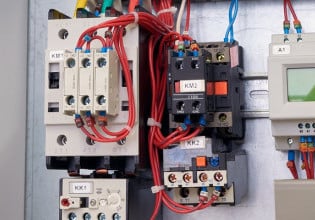Launcher’s 3D-Printed E-2 Engine Successfully Completes Test Fire
Pioneering space vehicle developer, Launcher, announces a testing milestone as its 3D-printed E-2 engine achieves full thrust at the NASA Stennis Space Center.
On April 22, 2022, Launcher Inc. announced a milestone completion of a successful test fire of the Launcher Light’s 3D-printed E-2 engine at the NASA Stennis Space Center in Mississippi. The E-2 engine was able to demonstrate nominal thrust, pressure, and oxidizer/fuel mixture ratio for the first time.
The California-based company, Launcher Inc., works in partnership with the U.S. Space Force, U.S. Air Force, and NASA to create high-performance rockets and orbital transfer vehicles. The company builds its pioneering technology by integrating the use of cutting-edge liquid propulsion technology and onsite 3D manufacturing. Launcher’s current projects include the development of its satellite positioning vehicle, the Orbiter, and its small launch vehicle, the Launcher Light.

The 3D-printed E-2 engine. Image used courtesy of Launcher
The E-2 Engine and Launcher Light
The E-2 engine is a closed-cycle, staged-combustion engine that powers the first stage with a single engine. During the test, the E-2 engine was able to achieve 22,046 pounds of thrust (which equates to around 10 metric tons) using LOX/Kerosene. The 2.62 LOX/Kerosene mixture ratio is said to confer the highest performance at 100 bars of combustion pressure. Test firing of the E-2 chamber was conducted in 10-second stretches with a total testing time of 40 seconds. Following the repeated firing, the chamber was reported to be in perfect condition. Launcher says that this result demonstrates the chamber’s reusability.
E-2 engine test firing achieves 22,046 pound-feet of thrust. Because a video of a rocket engine is much better than words. Video used courtesy of Launcher
Although Launcher says that the force generated by just one of its E-2 engines will allow the Launcher Light to carry a 150 kg payload at low earth orbit (LEO), the company has yet to test both engine and launch vehicle together to prove the feasibility of such a flight. The small launch vehicle measures 50 ft in height and 3.6 ft in diameter and has a liftoff mass of 8,342 kg.
To provide a couple of comparisons for perspective on thrust, the F-15EX is a next-generation fighter aircraft being developed by Boeing for the US Air Force (USAF). According to Airforce Technology, this jet has a take-off weight of 37,000 kg and is powered by two GE engines, with each generating a thrust of 29,000 lb. At a larger scale, a commercial jet like the four-engined Boeing 747-400 can be configured with engines each producing around 60,000 lb of thrust. Of course, the take-off weight of this jet is far greater than either the Launcher Light or F-15, at 396,900 kg.
A 3D-printed Copper Alloy Combustion Chamber
Launcher is the first small launch company to use 3D-printed copper alloy to create the E-2 engine’s combustion chamber. The combustion chamber uses industrial supply chain copper chromium zirconium alloy (CuCrZr) and is printed as a single part to reduce production costs and minimize supply chain constraints. The chamber’s design also features internal regenerative cooling channels. Launcher and AMCM co-developed the AMCM M 4K 3D printer used to produce the chamber. The E-2’s co-axial injector is 3D-printed on a Velo3D Sapphire.
Launcher is also pushing forward testing a turbopump with the necessary 3x pressure of the nominal combustion pressure. Once testing of the engine and turbopump is completed, they will be integrated and enter into a proving phase. Pending testing proves a success from all angles, the Launcher Light is planned to undertake its inaugural launch in 2024.






